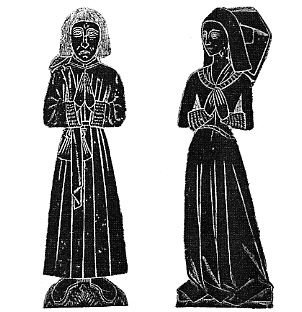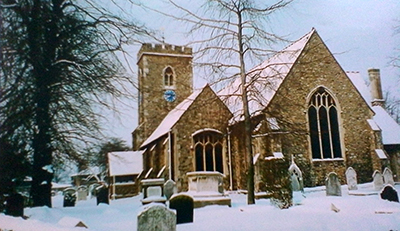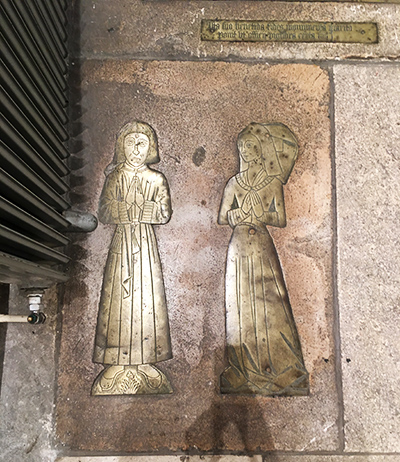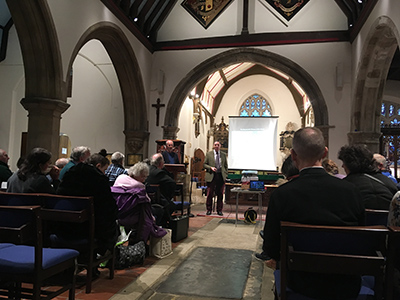
Bartholomew Willesden

The History of Bartholomew Willesden
From the beginning our Society has used the figure of Bartholomew Willesden as its logo. This image is from the oldest brass in St.Mary’s church dating from the end of the 15th century. The complete brass currently comprises two figues, approximatey 25 inches high representing Bartholomew and his wife Margaret. They are standing on grass mounds in the attitude of prayer. The Landowe MS 874 f 78b in the British Museum, complied in the latter half of the 16th century, gives a transcript of the Latin inscription, which was once atached to it. A translation reads: –
‘Pray for the souls of Bartholomew Willesden, formally appointed comptroller of the great roll of the King’s Exchequer, and Margaret and Margaret his wives; who died on the 26th day of the month of February, in the eighth year of the reign of King Henry VII and in the year of our Lord 1492, upon whose sould may God have mercy, Amen.’
From this incription we learn that the brass once consisted of Bartholomew Willesden, his two wives (both named Margaret), and an inscription.
The first mention nof this brass in any county history is in 1876. Thorne in his Environs of London says that ‘the brasses include Bartholomew Willesden and wives’. In Memorials of Old Middlesex, edited by J.Tavenor-Perry, published in 1909, is a more explicit account – it says ‘there are brasses to Bartholomew Willesden, 1492, and his two wives and four daughters‘.
A rubbing of this brass in the Victoria and Albert Museum in South Kensington, dated about 1880, shows the monumentwith the same components. There is by this time no inscription. The four daughters on the left side of the monumnet are facing towards the right, suggesting that there were once sons on the right hand side. They also stand on grass mounds in the attitude of prayer, and are dressed in a similar manner to their mother. Recently it has been suggested that the four daughters are in the Museum of Archaeology and Anthropology at Cambridge ref. 25.988.
Bartholomew wears a gown (somewhat resembling a cassock), which is close about the neck, and has cuffs faced with ermine. A hood, perhaps, of fur, hangs over the right shoulder connected by two straps to a scarf hanging down in front. To a girdle is attached a gypciere.
The will of Bartholomew Willesden, if he made one, is not traceable, but we know from various legal documents that he hend land at Oxgate. All Souls College, Oxford rented some land called “Arnoldislandes” in Hendon from Bartholomew, for which they paid him four shllings a year. His estate passed on his death to his son Thomas.
More information in Journals 35 and 50, available as pdf downloads in the Archive section, which is the WLHS members area (coming soon)



